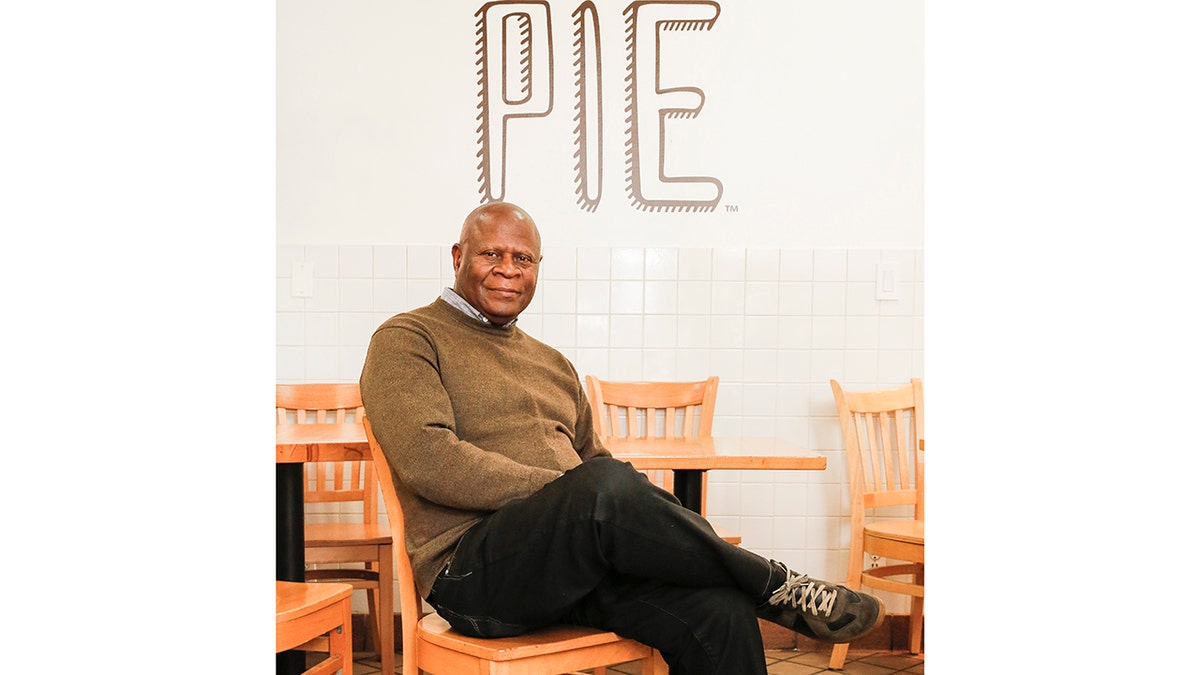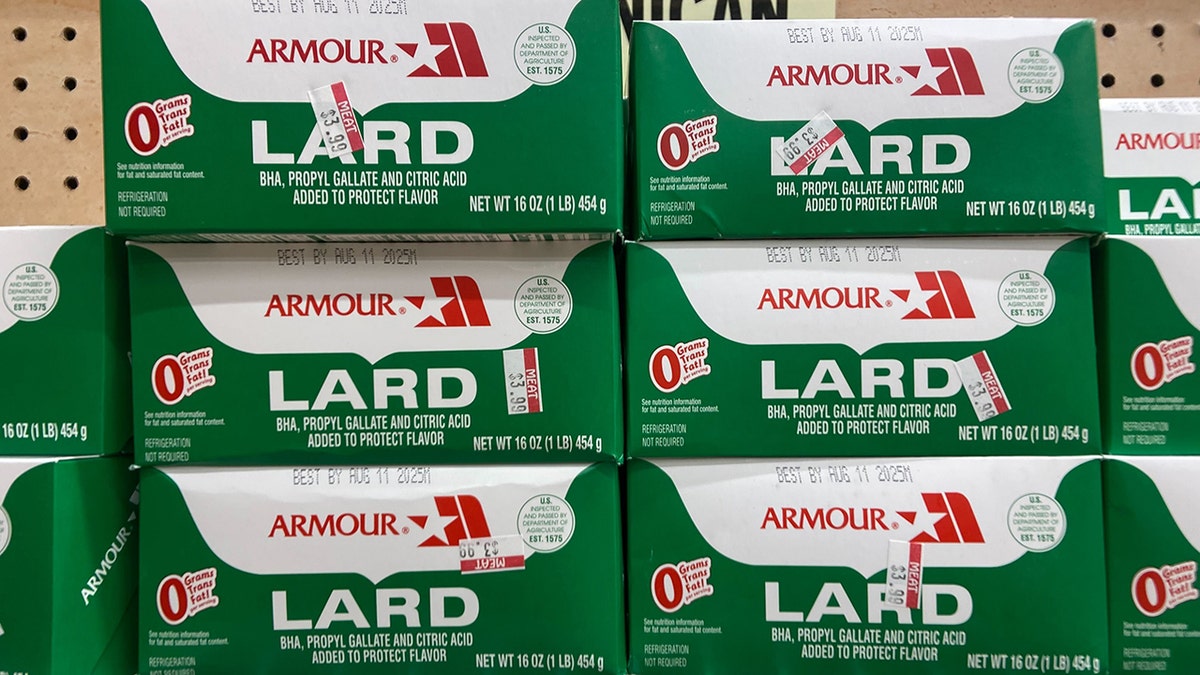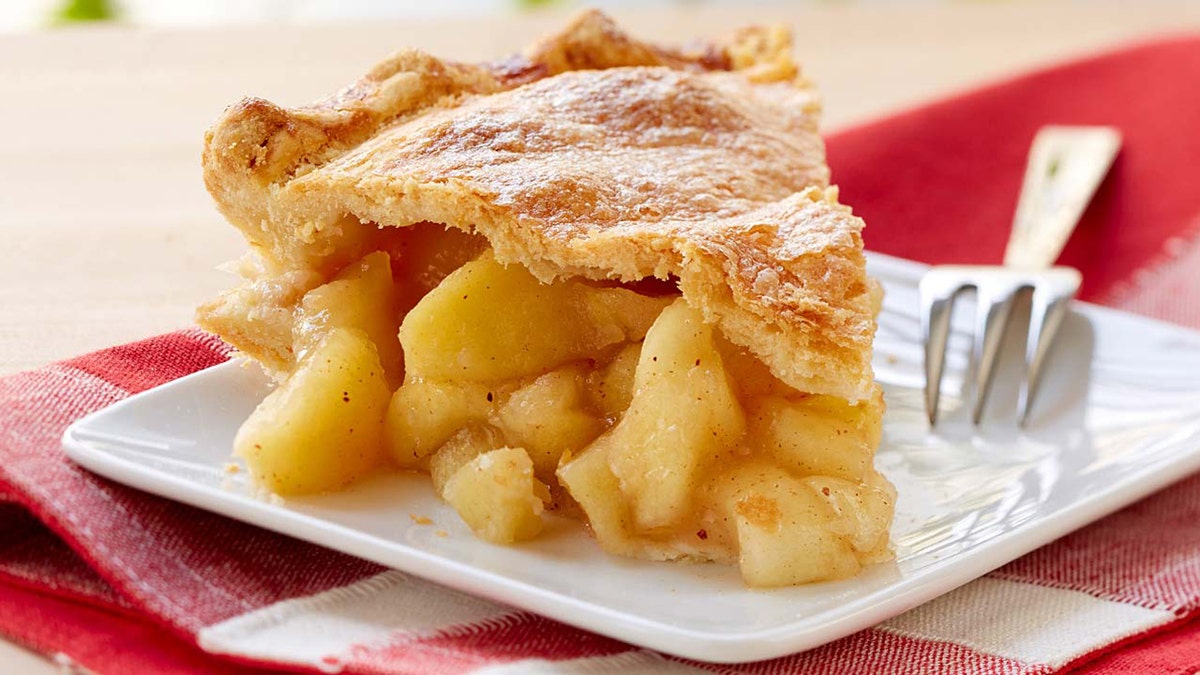Lard was the canary in the coal mine of culinary correctness.
Rendered pig fat was ubiquitous in human diets for centuries. It was used to fry everything from dough to chicken and was an essential ingredient in pie making.
Lard tragically fell from public favor during the Great War on Monounsaturated Fats in the 20th century.
5 FOODS THAT ARE BEST FOR BONE HEALTH, NUTRITIONISTS SAY
Progressive trans-fats activists launched a bombardment of bad publicity against animal fats starting in the 1950s, often culled from inaccurate sources.
Everybody loved lard in the 1960s — yet by the 1980s, nobody dared mention it.
Lard is one of the essential ingredients in the crust made by Little Pie Co. of New York City, a celebrated bakery in Midtown Manhattan. (Courtesy Little Pie Co.)
Humanity’s staple foodstuffs were soon caught in the crossfire: Salt, sugar, eggs, butter and wheat were all savaged as unhealthy over the years.
But the times they are a changin’.
“The main reason we use lard is because of the flakiness that it gives to our pie crust,” Arnold Wilkerson, the owner of Little Pie Co. in New York City, told Fox News Digital.
‘MY MOTHER’S CHEESECAKE’ RECIPE IS THE ULTIMATE NOSTALGIC DESSERT: ‘DELICIOUS BITE’
Lard has enjoyed a rebirth in recent years thanks largely to a heroic band of pig-fat patriots who withstood the bad-news blitzkrieg.
Pie makers and pastry chefs never surrendered their right to keep and bear lard.

Arnold Wilkerson, a former dramatic actor, founded Little Pie Co. in New York City’s theater district in 1985. (Little Pie Co.)
“We combine a ratio of lard with butter to get its flavor. So that’s the ideal combination of flakiness and flavor.”
APPLE PIE FRENCH TOAST CASSEROLE FOR A DELICIOUSLY SWEET BREAKFAST: GET THE RECIPE
The Great War on Monounsaturated Fats claimed its most famous victim in 1990, when fast-food giant McDonald’s was forced to stop using delicious beef tallow to cook its fries.
“The main reason we use lard is because of the flakiness that it gives to our pie crust.”
“In the last several decades, however, the tables have turned as health experts have come to new understandings about fat and heart health,” food and cooking site Mashed.com reported.
CANDY TOURS OF AMERICA: 5 DELECTABLE DESTINATIONS FOR SWEET FAMILY MEMORIES
The site added that “saturated fat from animal sources, including butter and lard, is not quite as bad for our health as previously thought.”

Lard on the shelves at Big Apple Market on Ninth Avenue in New York City. Lard has regained a presence on supermarket shelves across the nation in recent years. (Kerry J. Byrne/Fox News Digital)
Lard, an all-natural product, was often replaced by trans fats — many of which are manmade.
“Trans fat clogs arteries, increasing the risk of heart attacks and deaths,” according to the World Health Organization, adding that “trans fat can be found in margarine, vegetable shortening …. and baked goods such as crackers, biscuits and pies.”
VEGETABLES THAT ARE BEST FOR GRILLING AND WHY: CHEFS SHARE 5 SMART TIPS
(Crisco, by the way, notes on its website, “All Crisco shortening products now have 0g trans fat per serving for a more healthful option.”)
Moderation remains the best advice, according to nutritionists.
Lard laughed in the face of culinary cancel culture and kale in 2020, when it landed at No. 8 (eight!) on the list of 100 of “the world’s most nutritious foods” published by the BBC.
CLICK HERE TO GET THE FOX NEWS APP
“A good source of B vitamins and minerals. Pork fat is more unsaturated and healthier than lamb or beef fat,” the BBC reported, citing a survey conducted of 1,000 scientists.
The shocking spot in the Top 10 put lard ahead of the queens of greens: broccoli raab (No. 30), kale (No. 31) and fresh spinach (No. 45).
Moderation remains the best advice, New York nutritionist and author Lauren Harris-Pincus told Fox News Digital.

Apple pie at Little Pie Co. in New York City. Lard is essential to making flaky pie crust, bakery owner Arnold Wilkerson told Fox News Digital. (Little Pie Co.)
“Saturated fats are contributions to heart disease, particularly animal fats,” said the author of “The Everything Easy Pre-Diabetes Cookbook.”
CLICK HERE TO GET THE FOX NEWS APP
“I would not advise anyone to add more saturated fats to their diets.”
For more Lifestyle articles, visit www.foxnews.com/lifestyle.
She also said, “A little bit of anything never killed anyone. So if you’re trying to make the world’s best pie crust and it takes a little lard — that’s probably OK.”